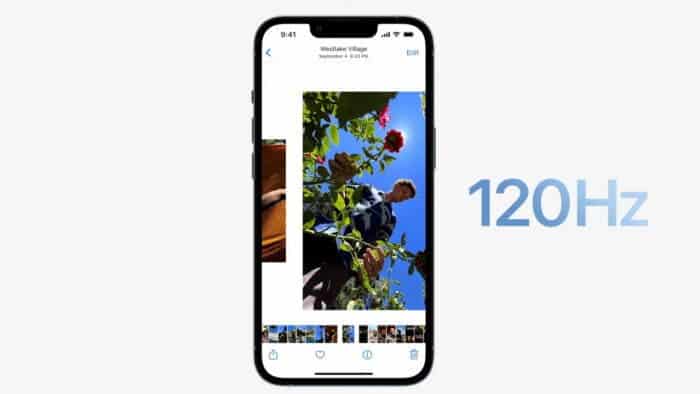After launching the iPhone 13 Pro and Pro Max with 120Hz ProMotion screens, it turned out that most animations in third-party apps still run at 60Hz and cannot take full advantage of the displays of new devices. At that time, Apple said that the problem was a Core Animation bug, which will be fixed in a subsequent release of iOS. It looks like the company has fixed the issue in iOS 15.4.
In the iOS 15.4 beta released yesterday, Apple has made a change that will allow third-party apps to automatically render animations at 120Hz refresh rates on iPhone 13 Pro and Pro Max. Apollo photo app developer Christian Selig took to Twitter today to announce that he received word from Apple that iOS 15.4 would support in-app animations at 120fps, and he himself was able to confirm the change.
With support for a 120Hz refresh rate, the new flagship iPhones can deliver smoother images than previous generations. This is especially noticeable when scrolling content and in games. It’s worth noting that many Android smartphone manufacturers have been offering high refresh rate screens for some time, even in fairly affordable devices. Apple itself introduced its first device with ProMotion back in the summer of 2017. They became the iPad Pro of the second generation.
Yay, got a little message from someone at Apple today that this is fixed in the iOS 15.4 betas and all apps automatically get 120 Hz animations on supported iPhones going forward, and just confirmed myself. (See attached, 1/120 = 8.33 ms) 🥳🥳🥳 https://t.co/EtZ9zkrM6S pic.twitter.com/04cl8uLb11
— Christian Selig (@ChristianSelig) January 27, 2022
iOS 15
According to official figures released by Apple, 72% of all iPhones introduced in the past four years; including iPhone 13 series, iPhone 12 series, iPhone 11 series and iPhone X series; are now working under iOS 15 and 63% of all iPhones are on the latest Apple OS.
The problem is, the adoption rate is much lower than previous versions. Indeed, in December 2020, iOS 14 was available on 81% of compatible devices of the previous four years. Prior to iOS 14, iOS 13 saw a 77% adoption rate at the same time after its release. With only 72% adoption, it seems that many users therefore preferred to stay on iOS 14; which continued to receive security updates.
However, although the adoption rate is much lower than in previous years; it is still much higher than newer versions of Android. Indeed, we saw last year that Android 11 was only in use on a quarter of devices; far away from the nearly three-quarters of users running iOS 15 at Apple.
Apple also revealed that 26% of iPhones released in the past four years are running iOS 14; while 30% of all iPhones are still running iOS 14. In addition, 2% of iPhones released in the past four years are running iOS 13 or lower; and 7% of all iPhones have not been upgraded to iOS 14 or higher.
On the tablet side, the situation is even worse. Indeed, the latest OS installation figures are much lower on the iPad. Only 57% of iPads released in the past four years run iPadOS 15 , while 39% use iPadOS 14 and 4% of older versions. In total, 49% of all iPads are currently running iPadOS 15, while 37 and 14% are running iPadOS 14 and iPadOS 13 or lower, respectively.





